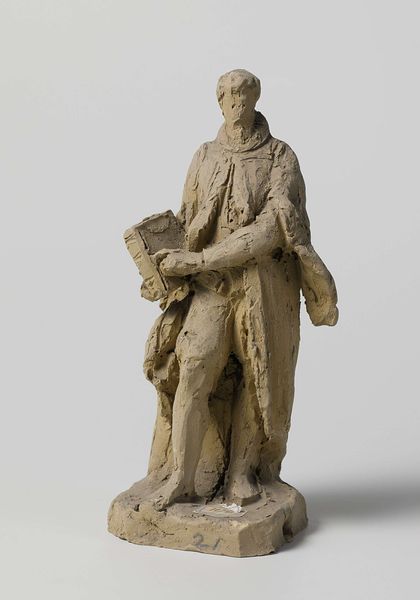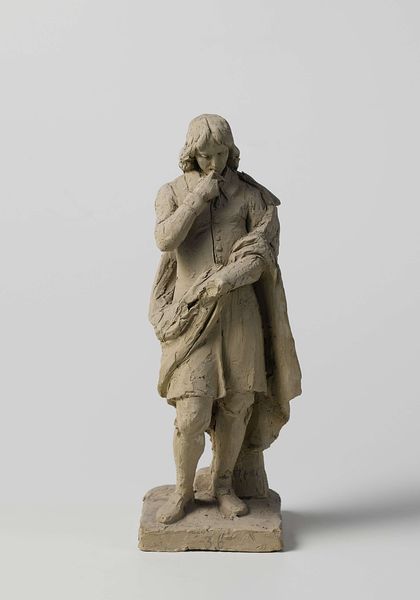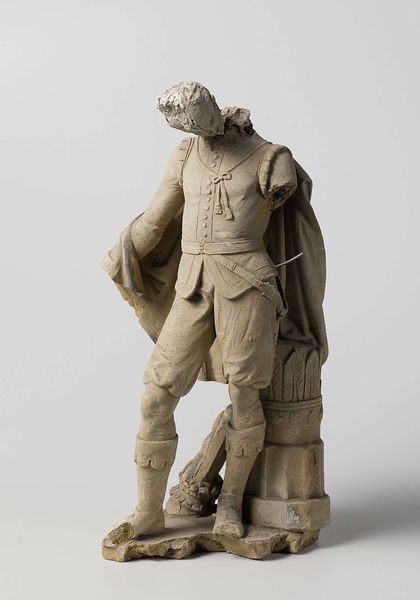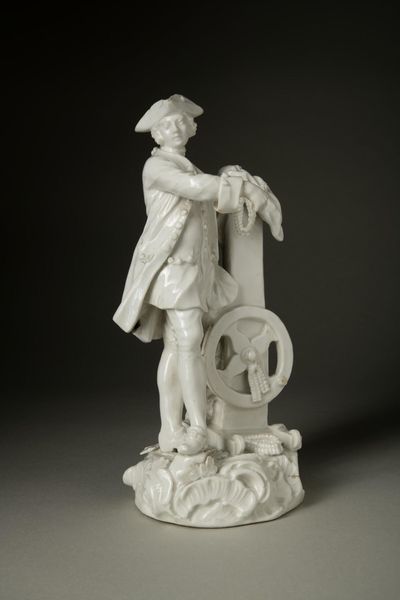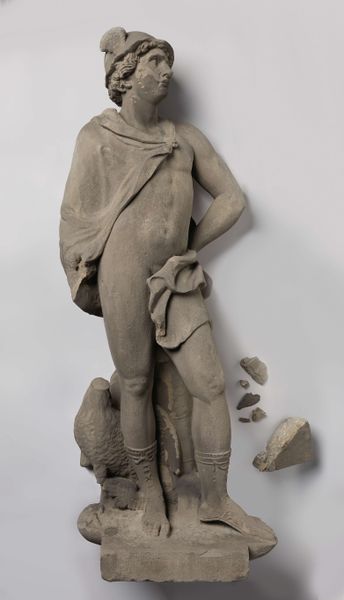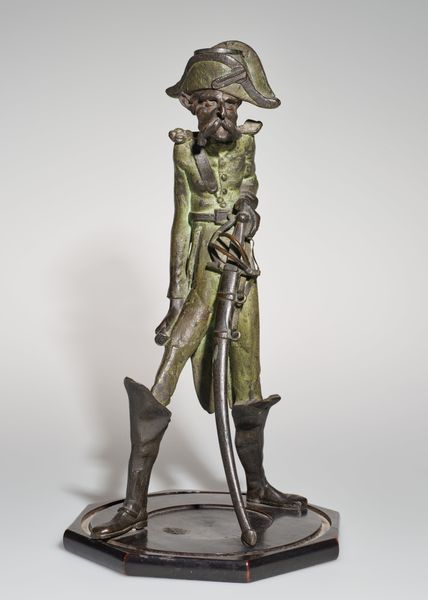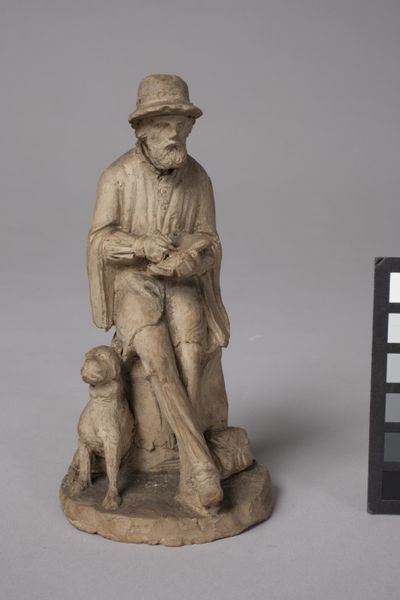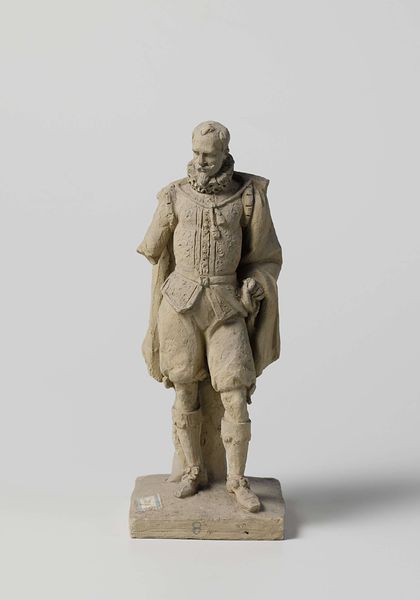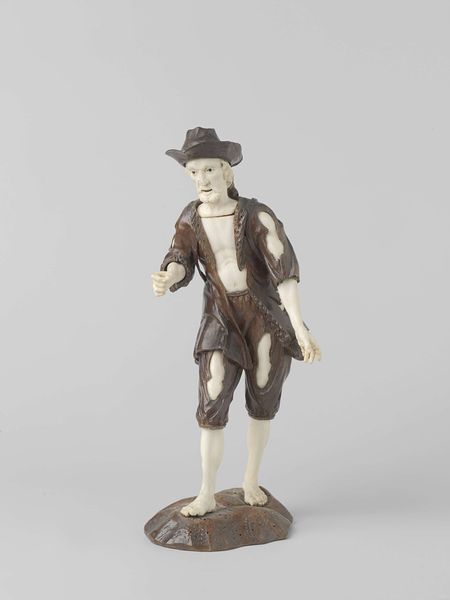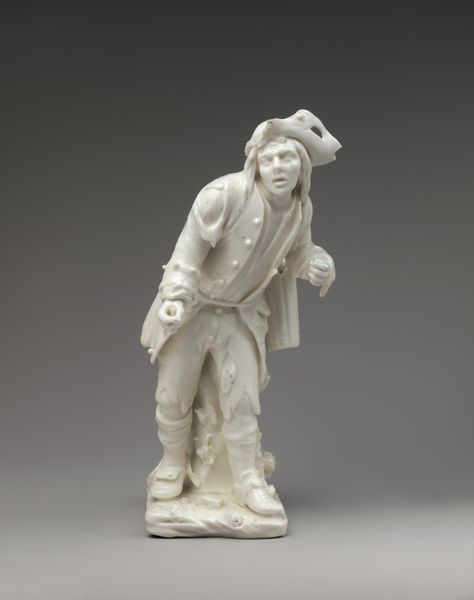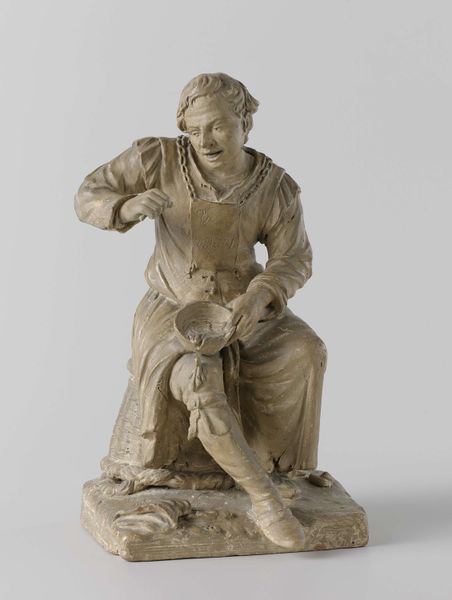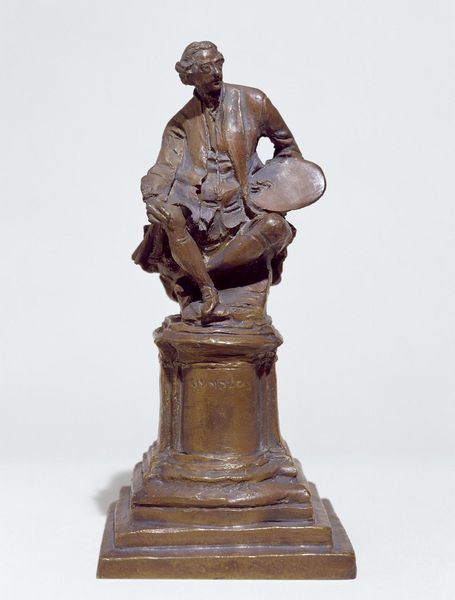
bronze, sculpture
#
portrait
#
sculpture
#
bronze
#
figuration
#
sculpture
#
academic-art
#
statue
Dimensions: height 30.5 cm, width 11 cm, depth 11 cm
Copyright: Rijks Museum: Open Domain
Editor: This is Eugène Lacomblé's "Ontwerp voor een standbeeld van Paulus Potter," created sometime between 1860 and 1880. It appears to be a bronze sculpture. It strikes me as rather formal; there’s a definite sense of stateliness about the figure's pose and dress. What's your take? How should we interpret a work like this? Curator: Well, seeing a 19th-century sculpture intended as a monument immediately suggests an exploration of artistic and civic identity. The piece is designed to evoke the historical painter Paulus Potter. But consider this: why erect a monument to an artist in the 19th century? What purpose does it serve for the artist, and society at large? Editor: I guess it's about honoring the past, creating heroes? But wouldn't people know who he was? Curator: Perhaps. But the placement of the sculpture in a public space changes how people encounter and remember him. It moves him from the realm of art history and places him within the visual fabric of everyday life. The Academic style, itself a choice, suggests an appeal to tradition, to established values. Who commissioned the piece matters, too. Was it a state project, a private donation, or the work of a particular movement? Editor: Interesting. I never thought about the commissioner having such a role. So, this statue is not just about Potter the artist but also about the society that chooses to memorialize him? Curator: Precisely. The choices about how an artist is represented—his attire, pose, and medium—all contribute to the message. Bronze implies permanence, dignity. It’s a lasting statement about cultural values, made physical and placed in public view. Think about who would identify with Potter at this moment and what statements they'd hope to make by commemorating his legacy through a monument like this. Editor: It's amazing how much more is at play here than simply celebrating an artist. Thanks, I'm seeing this from a totally new angle now. Curator: My pleasure. These statues become powerful tools for understanding what a community values and who it chooses to remember, which can really change how we view art.
Comments
No comments
Be the first to comment and join the conversation on the ultimate creative platform.

